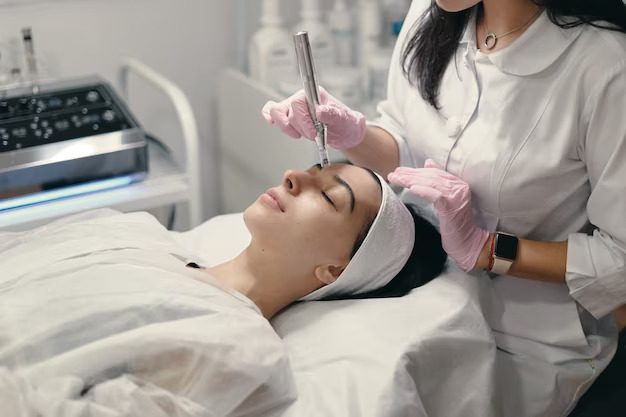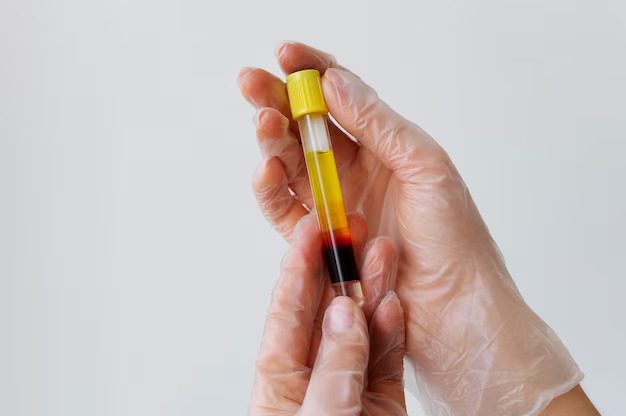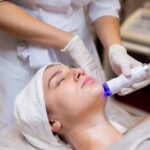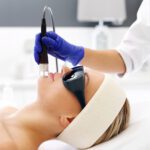
Welcome to our in-depth exploration of Microneedling with Platelet-Rich Plasma (PRP) and Platelet-Rich Fibrin (PRF). These cutting-edge regenerative therapies have gained tremendous popularity in the quest for youthful and radiant skin.
Let’s delve into the science behind PRF and PRP, their healing factors, and how they can work wonders for your skin.
The Basics: Microneedling, PRP, and PRF
Microneedling, or collagen induction therapy, is a minimally invasive procedure that triggers the skin’s natural healing process. It involves using tiny, sterile needles to create controlled micro-injuries in the skin’s surface, stimulating collagen and elastin production for a smoother and firmer complexion.
Platelet-Rich Plasma (PRP) and Platelet-Rich Fibrin (PRF) are regenerative therapies derived from your blood. PRP concentrates on platelets and growth factors, while PRF takes it further with a fibrin matrix with a higher concentration of platelets, leukocytes, and other regenerative elements.
Composition and Preparation of PRP and PRF

PRP is prepared by drawing a small amount of blood and then centrifuging it to separate the platelet-rich plasma from other components.
On the other hand, PRF requires a different centrifugation process, resulting in a fibrin clot with a higher concentration of platelets, making it a powerhouse of healing elements.
Healing Factors in PRP and PRF Microneedling
PRP is packed with essential growth factors, including Platelet-Derived Growth Factor (PDGF), Transforming Growth Factor (TGF), Epidermal Growth Factor (EGF), and others. These growth factors are pivotal in tissue repair, collagen synthesis, and rejuvenation.
PRF’s uniqueness lies in its additional healing factors, particularly fibrin, a natural scaffold for wound healing and tissue regeneration. Leukocytes, also present in PRF, play a crucial role in immune response and inflammation regulation, further enhancing the healing process.
How PRP and PRF Work in Microneedling
Microneedling with PRP combines the benefits of both treatments. The tiny microchannels the needles create allow the PRP to penetrate deeper into the skin, amplifying collagen induction and accelerating the healing process.
Microneedling with PRF takes it up by providing a more sustained release of growth factors due to the fibrin matrix. This ensures prolonged stimulation of collagen and elastin, resulting in enhanced skin rejuvenation.
Clinical Applications and Benefits

PRP and PRF have proven to be highly effective in various clinical applications. In skin rejuvenation treatment, they reduce fine lines and wrinkles and improve skin texture, restoring a youthful glow. Regarding scar reduction, both treatments help improve the appearance of acne scars, surgical scars, and stretch marks.
Hair restoration has also seen promising results with PRP and PRF, stimulating hair follicles and promoting growth. Patients have reported increased hair density and improve overall hair quality.
Safety and Side Effects
Microneedling with PRP and PRF is considered safe when performed by qualified professionals.
However, minor side effects such as redness, mild swelling, and bruising may occur, but these usually subside within a few days.
Tailoring PRP and PRF for Individual Needs
Choosing between PRP and PRF depends on individual needs and the extent of the skin concern.
Your aesthetic practitioner will consider factors like skin type, age, and specific issues to tailor the treatment for optimal results.
Future Directions and Research
Ongoing research in regenerative medicine continually expands our knowledge of PRP and PRF.
As technology evolves, we can expect more advancements and innovations in skin rejuvenation and wound healing treatments.
Conclusion
In conclusion, the science behind Microneedling with PRP and PRF showcases their remarkable healing factors and potential to revolutionize skin rejuvenation.
At Saint Aesthetix, we offer these cutting-edge treatments to help you achieve your desired skin goals.
Call us today to explore the benefits of Microneedling with PRP or PRF and unlock the true potential of regenerative therapies for your skin.


